Children's Literature in Special Collections
Chapbooks, Street Cries, and Dime Novels
The definition of a chapbook is loose, but in general, a chapbook is a small book or pamphlet often sold by travelling salesmen in the 17th-19th century. These inexpensive books, usually 8-24 pages, contained materials such as poems, stories, moral tales, illustrations, nursery rhymes and ballads that were very appealing to children. Chapbooks varied greatly in quality, some were produced with beautiful woodcuts, well edited tales, and an emphasis on good grammar. Lesser quality books displayed grammatical errors, poor printing, and generic illustrations that were used repeatedly, regardless of the chapbook's content. Despite the questionable quality of some chapbooks, they played an important part in literacy as they were the primary access to literature for the "common" folk.
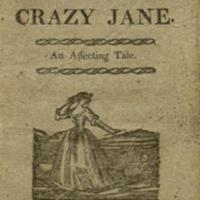
The History of Crazy Jane:
An Affecting Tale.
BV4517 .H56 1700z

Nixon Cheshire Prophecy at Large
by Robert Nixon.
BF1815.N59 A3 1745

The Mountain Hermit, or,
The History of Solitary Simon.
PR3991.A1 M67 1800z
Street Cries
"Street Cries" are verses, chants, and jingles that peddlers and merchants would "cry out" in the streets of town to advertise their goods. Publishers in the 17th-19th century used these popular chants along with images of vendors as material for their books. Naturally, street cries and other occupation books were enjoyed by children as they contained illustrations and catchy rhymes.

London Cries for Children.
PZ5 .E2 2
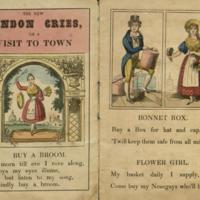
The New London cries, or,
A Visit to Town.
DA688 .N49 1800z
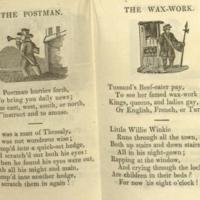
The Cries of Banbury and London.
DA690.B22 C7 1830
Dime Novels
In the mid 19th century, a new type of juvenile literature, Dime novels, emerged. The term "dime novel" was originally a brand name (Beadle's Dime Novels) but after the popularity of the novels exploded, it became a general term for this type of pulp literature. These novels were specifically marketed to younger audiences, primarily males from the ages of 8-16. Dime novel stories tended to be sensational and melodramatic and contained simpler language so children could read and interpret the stories easily without having to consult an adult.
While the stories were very popular with the youth, some adults were not as fond of the literature, complaining about the use of slang, unrealistic scenarios, and violence. Dime novels lost popularity by the early 20th century with the emergence of newspaper comics and other types of low cost fiction.
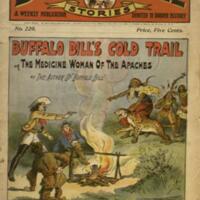
Buffalo Bill's Cold Trail, or,
The Medicine Woman of the Apaches
by Self-made man.
PS2048.I53 B874 1905
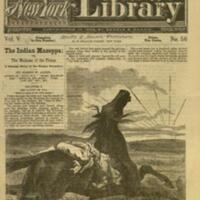
The Indian Mazeppa, or,
The Madman of the Plains
by Albert W. Aiken.
PS1006.A725 I53 1878
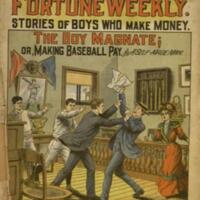
The Boy Magnate, or, Making Baseball Pay
by Self-made man.
PS3537.E364 B69 1907
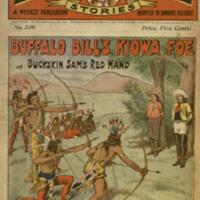
Buffalo Bill's Kiowa Foe, or, Buckskin Sam's Red Hand
by Self-made man.
PS2048.I53 B88 1905